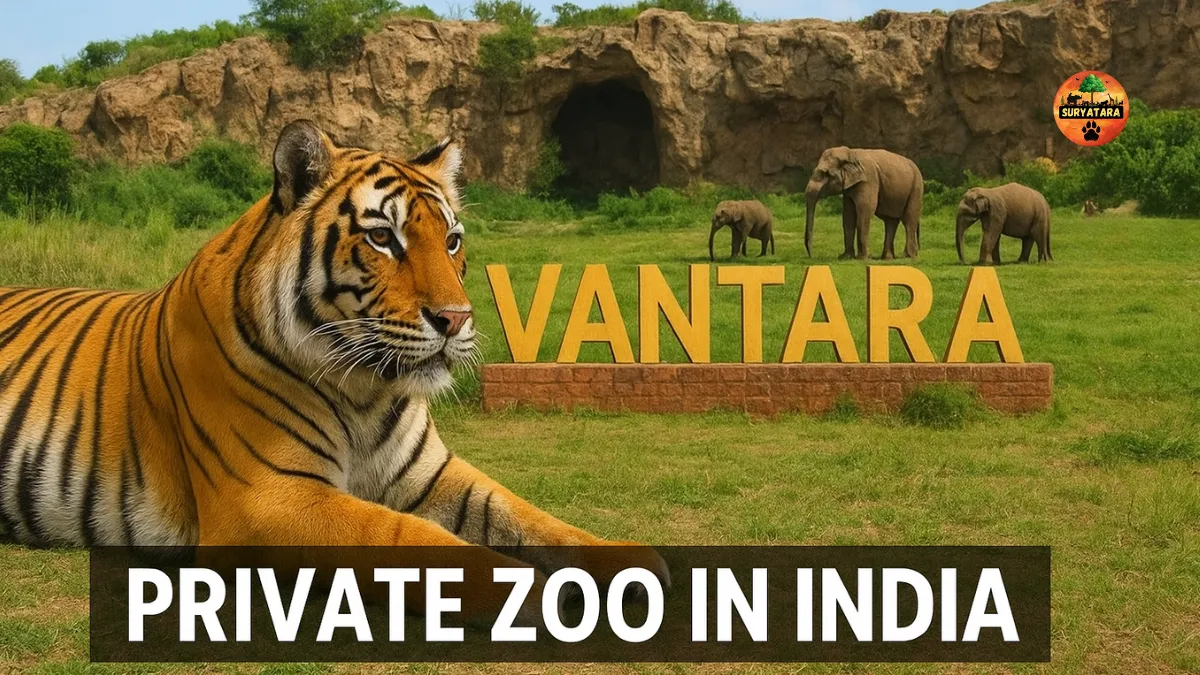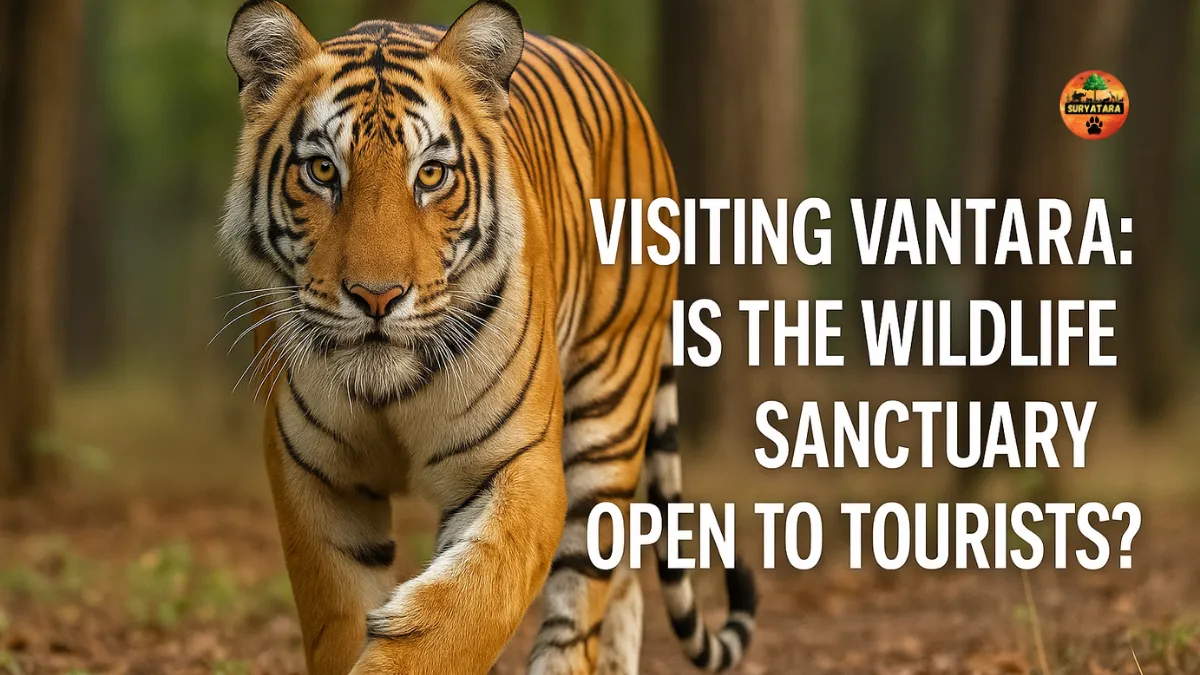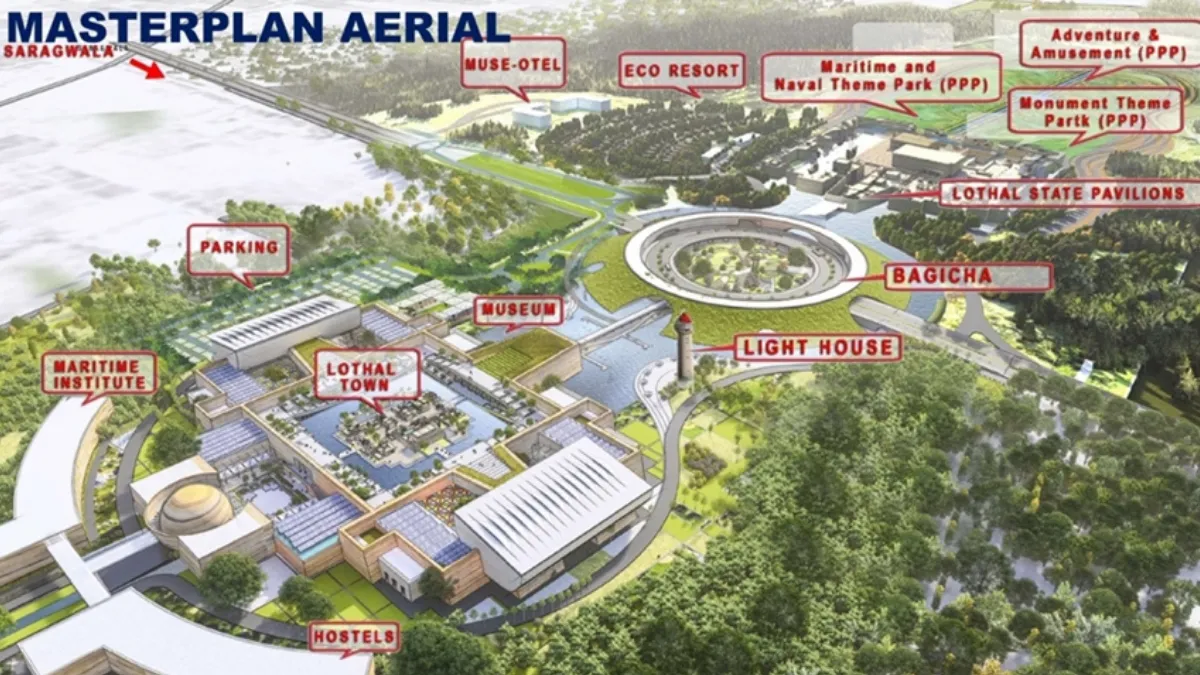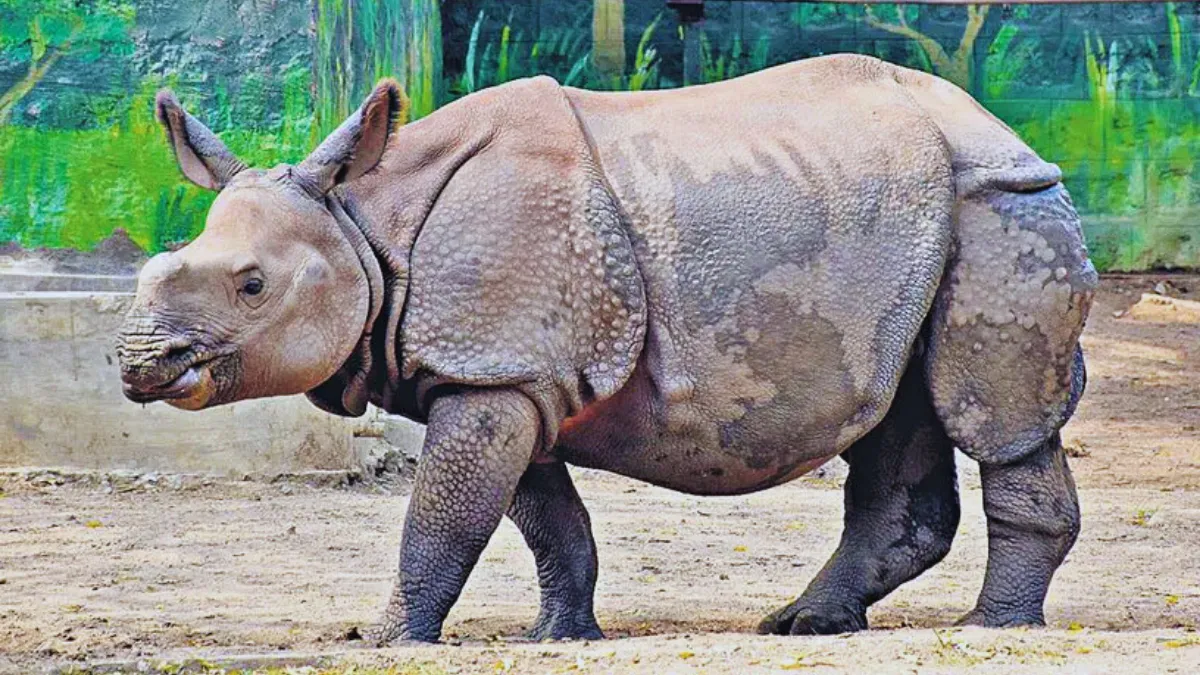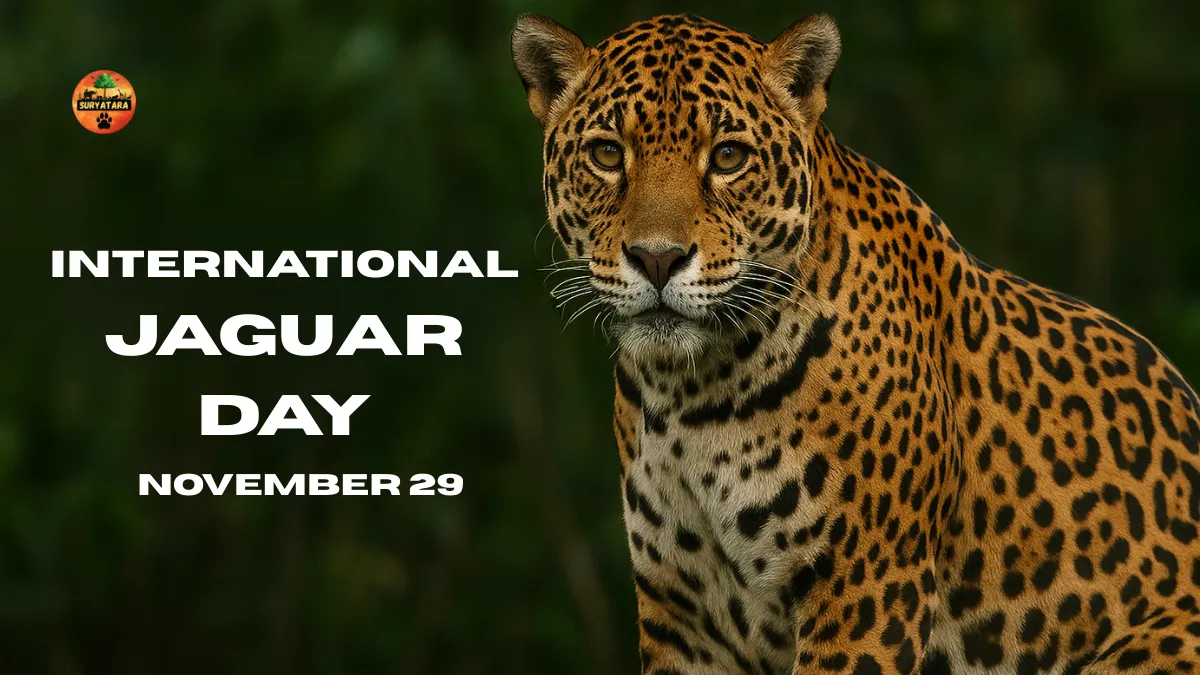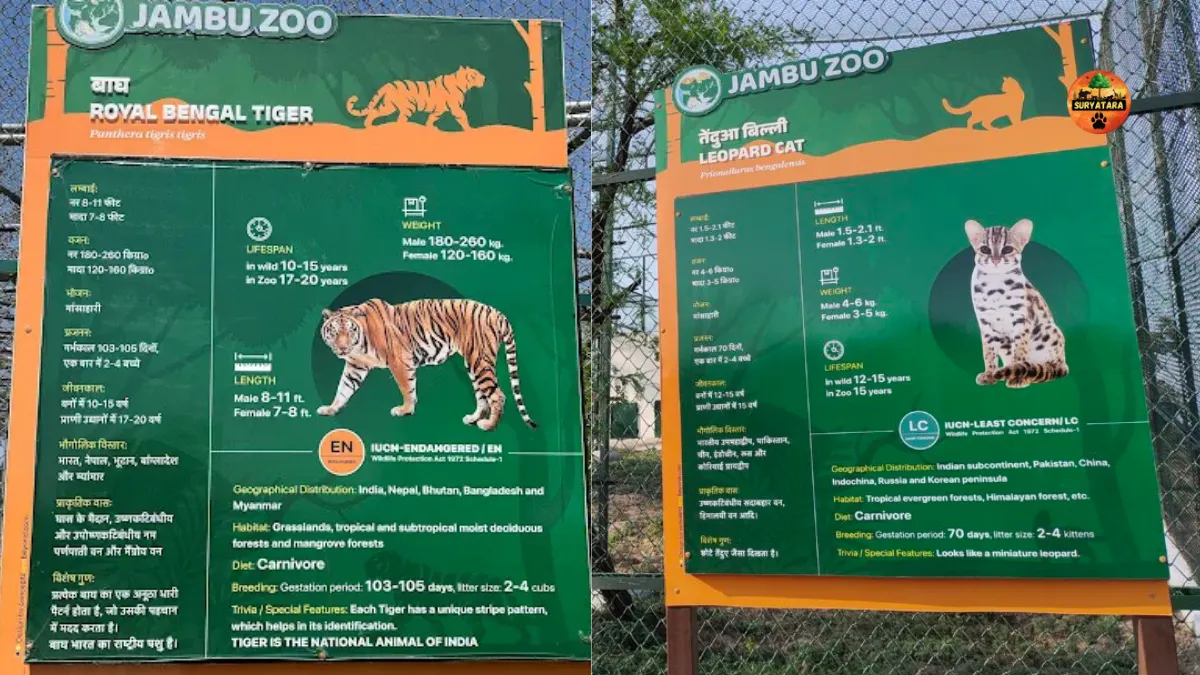Jamnagar, Gujarat – In recent years, India has emerged as a leading voice in wildlife conservation, and at the heart of this movement stands Vantara, a groundbreaking initiative that is redefining the way the world looks at animal care. Conceptualized and nurtured under the vision of Anant Ambani, and supported by experts such as Bharat Jagmohan Mehra, Vantara is being hailed as a global model for ethical animal welfare.
Unlike traditional zoos or commercial parks, Vantara is not a place for entertainment or ticketed visits. Instead, it is a 3,000-acre sanctuary in Jamnagar, built with a mission to rescue, treat, and rehabilitate animals who have suffered abuse, neglect, or the dangers of trafficking.
The Vision Behind Vantara
Speaking about the project, Bharat Mehra, Chief Advisor to Anant Ambani and a seasoned philanthropist with more than 25 years of humanitarian leadership, describes Vantara as “more than a sanctuary – it’s a global benchmark in ethical animal care.”
The inspiration, he explains, comes from Anant Ambani’s lifelong passion for animals. “This initiative reflects his belief that every living being deserves dignity, care, and a second chance at life,” says Mehra.
At its core, Vantara is a non-profit, conservation-driven mission. It does not operate as a zoo, nor does it indulge in commercial exhibitions. Its sole purpose is to heal, protect, and restore balance between humans, animals, and the ecosystem.
What Makes Vantara Unique?
While sanctuaries exist across the world, Vantara stands apart for several reasons:
- Non-commercial focus – No ticketed visitors or commercial shows.
- Holistic rehabilitation – Medical treatment, psychological recovery, and safe habitats.
- Advanced infrastructure – World-class veterinary hospitals, hydrotherapy pools, and AI-based health monitoring.
- Global collaboration – Partnerships with wildlife experts from Africa, Europe, and the U.S.
- Sustainability-first model – Solar energy, green architecture, water recycling, and organic waste management.
Vantara, therefore, represents the next generation of wildlife care facilities – one where animals are treated with compassion, not as exhibits.
The Scale of Rescue and Care
To date, Vantara has already provided care for over 2,000 animals, ranging from:
- Elephants rescued from circuses or illegal captivity.
- Big cats such as lions, tigers, and leopards saved from abuse or poor enclosures.
- Birds and exotic species recovered from trafficking networks.
- Native species injured in the wild or affected by human-wildlife conflict.
Many of these animals arrived at Vantara in a critical state – emaciated, abused, or abandoned. Today, thanks to the round-the-clock veterinary teams and customized habitats, they are recovering with dignity and care.
Advanced Infrastructure for Healing
One of Vantara’s most defining strengths is its state-of-the-art medical and rehabilitation facilities.
- Veterinary hospitals equipped with cutting-edge surgical and diagnostic technology.
- Hydrotherapy pools for elephants, aiding in joint and muscle recovery.
- Stress-free animal transport systems, designed to minimize trauma.
- Species-specific enclosures, built to replicate natural habitats.
- AI-driven health monitoring, ensuring real-time updates on animal well-being.
- Bio-acoustic labs, which study animal communication to enhance welfare.
This scientific and compassionate approach makes Vantara one of Asia’s most advanced wildlife care centres.
Also read: What is Vantara Ambani? Inside Anant Ambani’s Wildlife Rescue and Rehabilitation Initiative
Sustainability at the Heart of Vantara
Beyond animal care, Vantara integrates ecological sustainability into every aspect of its design.
- Built with green architecture and powered largely by solar energy.
- Operates on water recycling systems and organic waste management.
- Has restored over 100 acres of degraded land, turning them into thriving green zones.
- Has reforested more than 1,000 acres, creating biodiversity-rich ecosystems.
This effort benefits not only rescued animals but also the local environment and climate resilience in Gujarat.
Empowering Local Communities
A project of this magnitude also creates ripple effects across human society.
- Employment opportunities for local communities in conservation and eco-restoration.
- Skill development programs, enabling people to gain expertise in animal care.
- Community engagement, where local populations learn about wildlife protection.
According to Mehra, “Vantara is building the kind of infrastructure and knowledge base that hasn’t existed in India before. It’s not just about the animals inside our gates—it’s about creating a nationwide culture of compassion and responsibility.”
Also read: Supreme Court Gives Clean Chit to Reliance’s Vantara Animal Welfare Project
Recognition and Global Impact
Since its inception, Vantara has received overwhelming support from government authorities, conservationists, and NGOs.
- Forest officials and international wildlife experts have praised its ethical standards and transparency.
- NGOs working in animal welfare see it as a knowledge hub that will strengthen India’s role in global conservation.
- The government has extended strong support, recognizing the sincerity and scale of the project.
Anant Ambani’s clear emphasis that Vantara is a humanitarian mission, not a commercial venture, has resonated widely both in India and abroad.
A Legacy in the Making
For Bharat Mehra, supporting this initiative is an honour. He sees Vantara not just as a project but as a legacy rooted in compassion, innovation, and respect for all living beings.
“Every animal we rescue within our gates represents many more outside that we indirectly help,” he says. “Our mission extends beyond boundaries – we want to empower others, spread knowledge, and create a new culture of animal care in India.”
Also read: Vantara Ticket Price in India Online Booking: Complete Guide for Visitors
Conclusion
Vantara is more than a sanctuary. It is a visionary model for animal welfare, a project that combines advanced science, sustainability, and humanitarian values. By rescuing thousands of animals, empowering communities, and restoring ecosystems, it is setting new global benchmarks.
In the words of Bharat Mehra: “The work has only just begun.”
As the world looks for solutions to balance human progress with ecological responsibility, Vantara in Jamnagar shines as a beacon of hope – a reminder that with compassion, innovation, and vision, we can create a future where every living being has the right to dignity and care.

